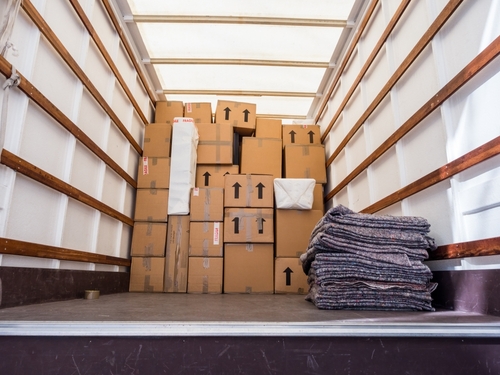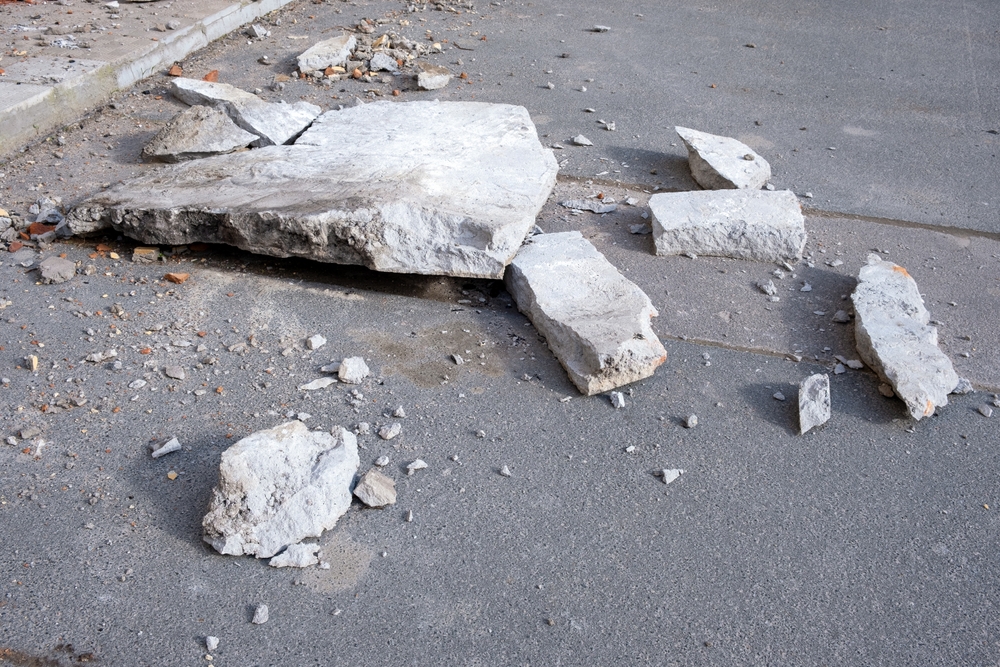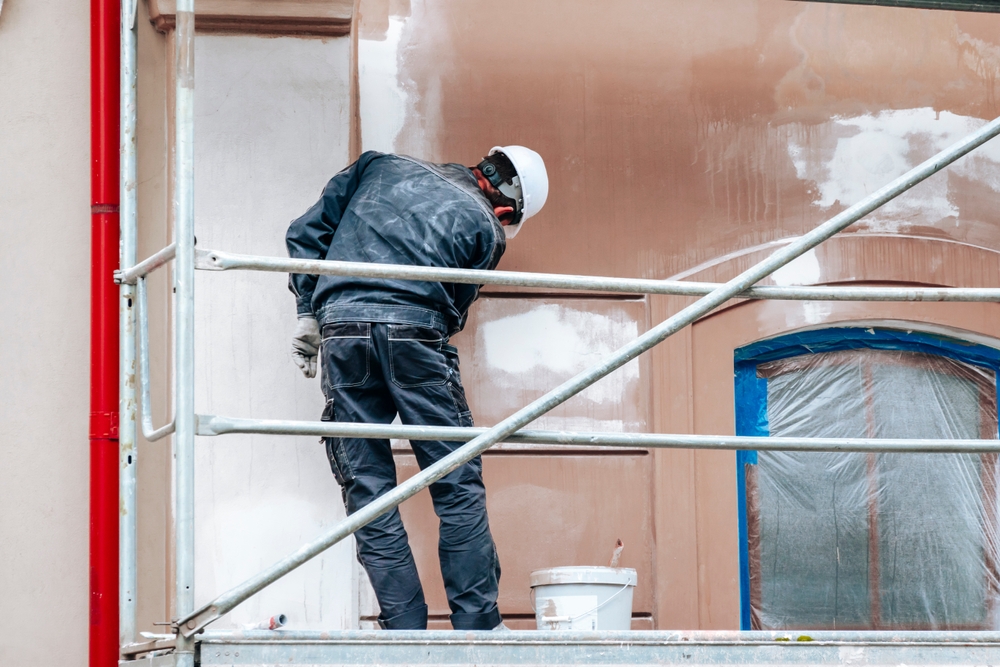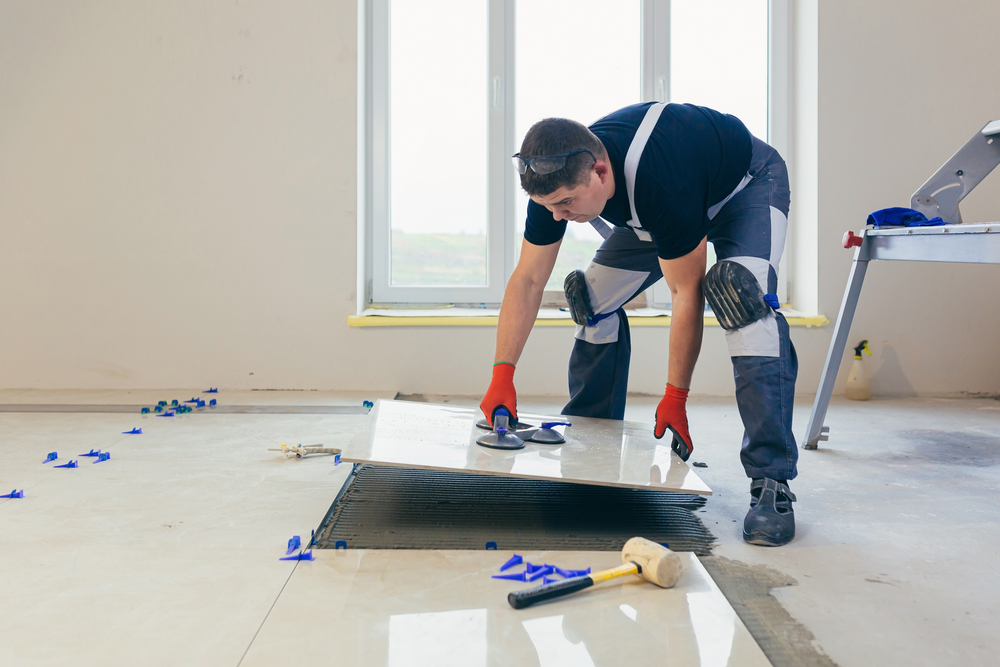May 1, 2024 - Benjamin Ehinger
Moving Guide: Your Ultimate Checklist for a Smooth Relocation
CALL NOW 844-762-8449
Moving can be an adventure full of possibilities, but it also requires meticulous planning and organization to ensure a smooth transition into your new home. In preparing for a move, you’ll face a variety of tasks ranging from simple to-do lists to more complex arrangements such as choosing the right moving company and managing utilities. Beginning with a comprehensive moving guide, you have the opportunity to minimize stress and manage your move effectively. From the onset, it’s important to create a detailed plan that covers every stage of your moving process.
As you get into the thick of move planning, remember that packing is an art as much as it is a science. Gather all the necessary supplies and start the process early to avoid last-minute rushes. For unwanted items and clutter that inevitably surface, consider a small dumpster rental from Waste Removal USA to keep your environment clean and organized. As moving day approaches, confirm the logistics with your chosen moving company, ensure that your new services and utilities are set up and consider the requirements of adjusting to a new community. Paying attention to these details will ensure that you don’t overlook the critical elements of moving.
 When planning a move, having the right supplies and an organized packing strategy can dramatically streamline your experience. Proper materials, clear labeling, and special handling for delicate items are crucial components.
When planning a move, having the right supplies and an organized packing strategy can dramatically streamline your experience. Proper materials, clear labeling, and special handling for delicate items are crucial components.
 When you’re moving, effectively managing your utility and service transition is crucial. You’ll need to ensure that services like electricity, water, and internet follow you to your new home, and notifying institutions like banks and insurance companies of your change of address is essential.
When you’re moving, effectively managing your utility and service transition is crucial. You’ll need to ensure that services like electricity, water, and internet follow you to your new home, and notifying institutions like banks and insurance companies of your change of address is essential.
 Moving with your family involves careful consideration of each member’s needs, particularly when it comes to health and education. Ensuring a smooth transition for your children and the management of medical records are paramount.
Moving with your family involves careful consideration of each member’s needs, particularly when it comes to health and education. Ensuring a smooth transition for your children and the management of medical records are paramount.
Key Takeaways
- Establishing a detailed plan early can alleviate the stress associated with moving.
- Efficient packing and decluttering are key steps in preparing for a move.
- Transition smoothly by managing logistics and setting up necessary services timely.
Initial Planning
When beginning your moving journey, thorough initial planning can pave the way for a smooth transition. The two pillars of this stage are compiling an organized moving binder and establishing a clear budget, which will steer the entire moving process.Creating a Moving Binder
Start your moving preparations by creating a moving binder. This binder will serve as a central repository for all of your moving-related documents. First, select a sturdy binder and label it with a permanent marker for easy identification. Within, create sections for:- Moving Checklist: Track tasks to complete, from packing to finalizing homeowners insurance.
- Quotations and Contracts: Save all communication with moving companies here.
- Inventory Lists: List items to move for insurance purposes.
- Receipts: Keep track of payments and potential tax-deductible expenses.
- Essential Documents: Store copies of important records and personal documentation.
Setting a Moving Budget
A carefully planned budget is essential for controlling the costs of your move. Outline all anticipated expenses using the following structure:- Moving Company Fees: Costs of professional movers or truck rental.
- Packing Supplies: Include boxes, packing tape, bubble wrap, etc.
- Travel Costs: Fuel, hotels, or flights if moving long distance.
- Time Off Work: Lost income if you need to take time off during the moving process.
- Unexpected Expenses: Set aside funds for unforeseen costs.
Choosing a Moving Company
When you’re planning to move, selecting the right moving company is crucial for a smooth transition. It involves thorough research, obtaining detailed estimates, verifying licenses and insurance, and weighing the pros and cons of professional movers versus a DIY move. In addition to hiring a moving company, there are also cheap yet quality auto shipping companies that can help move your vehicle in tandem with your belongings.Researching Movers
Begin by compiling a list of potential moving companies. Check their reputation by reading customer reviews and seeing their ratings with the Better Business Bureau. It’s important to conduct detailed research on movers to ensure you get quality service.Obtaining Estimates
Contact multiple professionals for onsite estimates. These should be detailed and allow you to compare prices and services. Ensure to get a binding estimate when possible, to lock in the quoted price.Checking Licenses and Insurance
Confirm that the mover has a valid USDOT number and is licensed to operate. This is a safety measure. Additionally, ensure they have adequate insurance to protect your belongings during the move.Considering the DIY Moving Option
Reflect on the possibility of a DIY move, particularly if you are looking to reduce costs. Consider renting a truck and handling the move yourself, but also take into account the added responsibilities and potential stress it may involve.Packing and Supplies
 When planning a move, having the right supplies and an organized packing strategy can dramatically streamline your experience. Proper materials, clear labeling, and special handling for delicate items are crucial components.
When planning a move, having the right supplies and an organized packing strategy can dramatically streamline your experience. Proper materials, clear labeling, and special handling for delicate items are crucial components.
Gathering Materials
Your selection of materials will set the stage for a successful move. Ensure you have an assortment of moving boxes in various sizes—small boxes for heavy items like books, medium boxes for most of your belongings, and large boxes for lighter, bulky items. Invest in quality packing tape to secure the boxes and bubble wrap or packing paper for protecting your items. Remember, you can often find free boxes from local stores or by checking online marketplaces.- Essentials for Packing:
- Boxes: Small, Medium, Large
- Packing Paper: For wrapping and cushioning
- Bubble Wrap: For fragile items
- Tape: Heavy-duty shipping tape
- Labels or Markers: For easy identification
Labeling and Inventory
A meticulous labeling system and detailed inventory can save you hours during the unpacking phase. Use a thick, permanent marker to label each box with its contents and intended room. Consider numbering the boxes and keeping a corresponding inventory list. This helps with valuation and insurance purposes, ensuring that all your possessions are accounted for throughout the move.- Labeling Tips:
- Write on tape to maintain box integrity
- Use color-coded labels for different rooms
- Number boxes and keep an inventory sheet
Special Items Handling
Delicate items such as glassware, electronics, or heirlooms require extra attention. Utilize purpose-made dividers or create your own with cardboard for additional structure within the box. Secure loose components with tape, and use ample bubble wrap. If you’re unsure about how to pack a specific item, professional moving companies offer guidance or can supply specialized packing materials.- Packing Delicate Items:
- Electronics: Original boxes or ample cushioning
- Glassware: Box dividers and wrapping
- Artwork: Bubble wrap and corner protectors
Moving Day Preparation
On the day of your move, it is essential to have a clear plan to ensure everything goes smoothly. By being prepared, you can avoid common pitfalls that can lead to stress or damage to your possessions.Last-Minute Checklist
Before the moving truck arrives, confirm that you’ve completed the following tasks:- Declutter: Make sure you have decluttered your home thoroughly. This not only makes packing easier but also reduces the load, which can save you money.
- Essentials Box: Pack an essentials box with items you’ll need immediately at your new home, such as toiletries, medications, and a change of clothes.
- Valuables: Keep your valuables, such as jewelry and important documents, in a safe place, preferably with you during the move.
- Furniture Prep: Disassemble furniture if necessary and ensure you have tools handy for reassembly.
- Inventory: Conduct a final walk-through of your home to confirm nothing is left behind.
Protecting Your Property
To protect your property from potential damage, take the following steps:- Furniture Pads and Dolly: Use furniture pads to prevent scratches and a furniture dolly to safely transport heavy items.
- Floors and Walls: Lay down protective coverings on floors and pad corners and doorways to prevent scuffs and damage to the walls.
- Good Housekeeping: Keep pathways clear of boxes and debris to ensure a safe and efficient move for everyone involved.
- Load Strategically: Place heavier items at the bottom of the moving truck and lighter boxes on top to prevent items from shifting and causing damage.
Utility and Service Management
 When you’re moving, effectively managing your utility and service transition is crucial. You’ll need to ensure that services like electricity, water, and internet follow you to your new home, and notifying institutions like banks and insurance companies of your change of address is essential.
When you’re moving, effectively managing your utility and service transition is crucial. You’ll need to ensure that services like electricity, water, and internet follow you to your new home, and notifying institutions like banks and insurance companies of your change of address is essential.
Transferring Utilities
To transfer utilities, you should contact your current providers at least two weeks in advance. This includes your electricity, water, gas, and sewage companies. Visit Moving.com to arrange the water and sewer service through your new city. For electricity and gas, list your current providers and research who supplies your new area.- Electricity/Gas: Obtain contact information for both your old and new providers.
- Water/Sewer: Contact the public utilities office in the new city.
Updating Addresses
Updating addresses is vital to maintain uninterrupted mail delivery and services. Make a consolidated list of institutions and notify them about your move. This includes your:- Banks: Update your billing address for all accounts.
- Auto Insurance: Region affects rates; update to avoid policy lapses.
Handling Subscriptions
Your subscriptions and recurring services need attention too. Cancel any location-based services or transfer them if possible.- Internet: Terminating or transferring your service with your service provider needs to be done a few weeks before moving.
- Magazines/Newspapers: Redirect or cancel based on your preference.
Legal and Financial Considerations
When preparing for a move, it’s crucial to be fully aware of the legal and financial obligations that accompany the process. From ensuring you have adequate insurance coverage to understanding the tax implications of your relocation, it’s important to consider these factors to protect your finances and comply with legal requirements.Insurance Coverage
Your belongings need protection during the transition. Verify that your moving company is partnered with reputable insurers and offers comprehensive policies. Remember to ask for written estimates of the insurance coverage options they provide. Check whether your current home insurance policy covers moves and keep track of all documents. For interstate moves, consult the U.S. Department of Transportation to understand the mover’s insurance requirements.Tax Implications
Relocation can have various tax consequences. If your move is employment-related and meets certain distance and time tests, you might be eligible for tax deductions. It’s essential to keep receipts of all moving expenses, including transportation, lodging, and storage. Don’t forget to submit a change-of-address form to the IRS to ensure you receive any tax-documented communications. Consider consulting with a tax professional to discuss potential deductions or liabilities associated with your move.Family and Medical Concerns
 Moving with your family involves careful consideration of each member’s needs, particularly when it comes to health and education. Ensuring a smooth transition for your children and the management of medical records are paramount.
Moving with your family involves careful consideration of each member’s needs, particularly when it comes to health and education. Ensuring a smooth transition for your children and the management of medical records are paramount.
Children’s Needs
When relocating, your children’s routines and educational continuities are essential. You should notify your children’s schools as soon as possible about the move to facilitate the transfer of academic and health school records. Research schools in your new area to compare curriculums and extracurricular activities, ensuring a match with your children’s needs and interests.Transferring Medical Records
Organizing your family’s health information beforehand will help alleviate stress during the move. Contact your doctors to secure copies of your family’s medical records. Make a list of prescriptions and ensure you have sufficient supplies during the transition. It is vital to establish care with new healthcare providers in your new location to ensure an uninterrupted continuum of care.Moving Logistics
When planning your move, addressing the logistics of travel and vehicle relocation is crucial to ensuring a seamless transition to your new home. From deciding whether to rent a storage unit to coordinating with friends and family, logistics play a key role.Travel Arrangements
Your travel arrangements should be planned well in advance. Book any required flights or hotels early to secure the best rates and availability. Consider the size and quantity of suitcases you’ll need if flying, making sure they comply with airline regulations. If you’re moving long-distance, arranging temporary accommodations near your new home might be necessary while you wait for the delivery of your household items.Vehicle Relocation
If you’re relocating over a long distance and not driving yourself, you’ll need to make arrangements for vehicle relocation. This may involve hiring a professional car shipping service. It’s essential to book services like this well ahead of time and ensure adequate insurance coverage is in place. For items not fitting in your vehicle or if you choose not to drive, consider options like renting a portable moving container or PODS, which can be both a transport and a temporary storage solution.Post-Move Organization
After the move, it’s essential to focus on organizing your new space efficiently. An effective strategy for unpacking and setting up your home minimizes stress and helps you enjoy your new environment quicker.Unpacking Strategy
Start by unpacking your essentials—items that you will need immediately, such as toiletries, a change of clothes, and basic kitchenware. Create a list and prioritize your boxes accordingly. It’s often helpful to label boxes with their contents and intended room to streamline the process.- Bedroom: Begin with your closets. Hang clothes and organize them as you like; consider seasonal rotation to maximize space.
- Kitchen: Place frequently used items within easy reach and organize pantry goods systematically.
- Living areas: Unpack books, electronics, and decorative items last, as they are not immediate necessities.
Home Setup
Take measurements of each room before arranging your furniture. Knowing the exact dimensions ensures that you make the most of your space and maintain clear paths for walking. Arrange your furniture in a way that is both functional and aesthetically pleasing.- Living Room: Aim for a conversational setup with your seating, keeping in mind the flow of movement.
- Bedroom: Your bed should be the focal point, with dressers and nightstands proportionately placed.
- Kitchen: Maximize counter space by organizing your appliances according to usage frequency.
Emergency Preparedness
In the event of an emergency during your move, being prepared can drastically improve the safety of both your family and your belongings. It’s important to establish a safety plan and have emergency contacts readily available.Safety and Security
Your safety plan should include the installation of a fire extinguisher in an easily accessible area, ensuring it’s suitable for all types of fires likely to occur in a home setting. Regularly check that your carbon monoxide detector is functioning correctly to prevent poisoning incidents, especially if you’re moving into an older home or one with gas appliances.- Checklist for Safety and Security:
- Obtain and familiarize yourself with a multi-class fire extinguisher.
- Test your carbon monoxide detectors and replace batteries if needed.
- Inspect all smoke alarms and ensure they are in working order.
- Evaluate the safety of your new home’s layout—identify two exit routes.
- Secure heavy furniture and appliances to prevent tipping during a disturbance.
Emergency Contacts
Maintain a list of emergency contacts including local police, fire departments, poison control, and nearby hospitals. Share this list with everyone in the household and keep a physical copy in a central location, along with being saved in your phone for quick access.- Emergency Contacts Table:
Service Phone Number Address Local Police (Insert number) (Insert address) Fire Department (Insert number) (Insert address) Poison Control (Insert number) (Insert address) Nearest Hospital (Insert number) (Insert address)
Assimilating into the New Community
When you move to a new community, assimilation is about more than just settling into your new home; it’s about becoming part of the fabric of the local area. This includes understanding and using local amenities, and seeking out social opportunities that align with your interests.Local Amenities
Your new community likely offers a variety of local amenities that can make your life both convenient and enjoyable. To start, familiarize yourself with the local services that are important to your daily life. This could include:- Healthcare: Locate the nearest hospitals, clinics, and dental offices.
- Transportation: Learn the public transportation routes if available, or the main thoroughfares for commuting.
- Grocery Stores: Identify where you can purchase fresh produce, like at a local farmers’ market, or find larger supermarkets for your weekly shopping.
Social Opportunities
Engaging with your new community means creating meaningful connections. Consider these recommendations:- Volunteering: Offering your time to a charity or local organization can be a great way to meet people and give back.
- Clubs and Groups: Look for local clubs that match your hobbies and interests. Whether it’s a book club, a sports team, or a gardening group, these are places where you’ll meet like-minded individuals.
- Events and Gatherings: Keep an eye on community message boards and local papers for upcoming events. Attending these can help you immerse yourself in the local culture and meet new friends.
Frequently Asked Questions
When preparing for a move, having a structured approach to organizing and packing can greatly reduce stress. Below you’ll find detailed answers to some of the most frequently asked questions about moving.What is the most efficient way to organize belongings for a move?
Start by decluttering and categorizing your items into keep, sell, donate, and throw away. Color-code boxes for each room and clearly label them with their contents and destination in your new home. Refer to The Ultimate Moving Checklist for a complete guide.What are the essential tasks to complete three weeks before relocating?
Three weeks prior, you should begin notifying the post office of your new address and start the mail forwarding process. You should also arrange utility services at your new home and schedule disconnection at your current one. Take a look at the New House Checklist for a comprehensive timeline.Which room should I start with when packing for a move?
It’s best to start with rooms you use less frequently, such as guest bedrooms or storage areas, and save the kitchen and bedroom for closer to moving day. This ensures you’re not packing away items you need on a daily basis.How can I create a timeline to ensure all moving tasks are completed?
Start by breaking down tasks week-by-week, starting with decluttering and ending with double-checking everything the day before the move. Tools like moving apps or a printable checklist can help keep you on track. Details on creating a moving timeline are available in the The Ultimate Moving Checklist.What items should be packed last when moving house?
Essential items such as toiletries, medications, a change of clothes, and basic cooking utensils should be packed last. You should also set aside a box or suitcase for these essentials to keep with you during the move.How can I simplify the packing process when moving to a new home?
To streamline packing, use wardrobe boxes for easy clothes transfer, wrap breakables in clothing to save on bubble wrap, and keep all hardware in labeled bags attached to the furniture they belong to. More tips for a smoother packing process can be found in How to Prepare for Your Movers.Can I benefit from a dumpster rental when moving?
A dumpster rental can be beneficial if you’re doing a large-scale purge before you move. It simplifies the process of disposing of unwanted items, especially if you’re downsizing or getting rid of bulky items.RECENT BLOGS
Our Reviews
Glenda Lanier Prowell
1721758635
I have ordered an 11 yard dumpster to be delivered to my house.Lonier was extremely helpful and answered all my questions. The rate was very reasonable.
Cedric Smikle
1721660395
Amber was extremely professional and courteous. She answered all of my questions and even some that I didn’t know I needed to ask.
Cait Kaider
1721243051
I highly recommend Waste Removal USA for their responsiveness and how the staff work hard to provide exceptional customer service. They have done well by us and our clients. Thank you!
Easom Family
1721223306
Louiner Pierre-Louis Is awesome! Did a great job. Will definitely be using this same company for all my dumpster needs because of his awesome customer service! Thank you!!!
tabitha Vazquez
1720539988
Wonderful and fast customer service!
LATEST BLOGS






